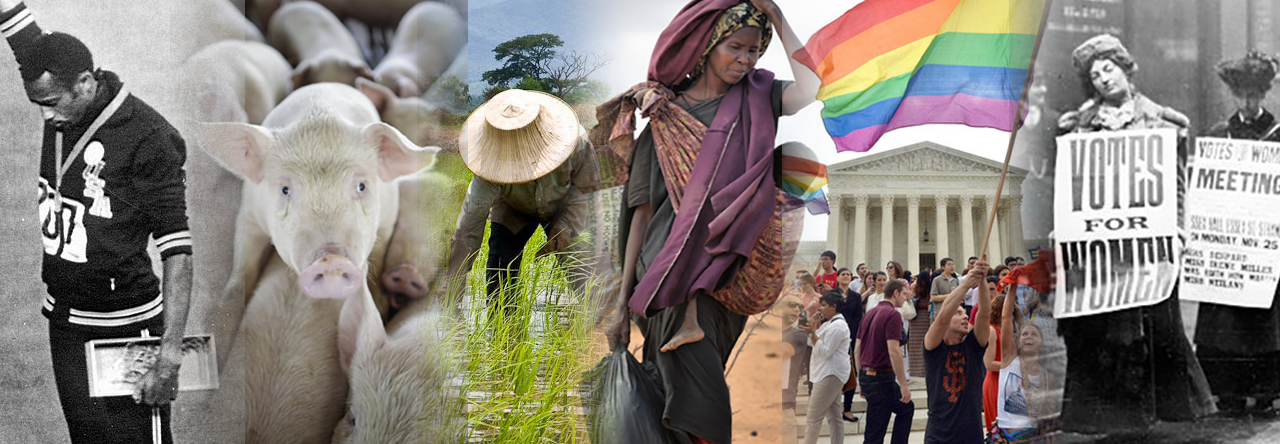Humanity faces a number of daunting challenges in the 21st century. Climate change and socioeconomic injustice figure prominently on this list. When it comes to tackling these challenges, two possible strategies divide policy makers.
On the one hand, there are those who point out that addressing either of these problems on their own is a mammoth task, and that taking them on simultaneously is simply utopian. This view sometimes comes with a dose of optimism about technological solutions to climate change. On the other hand, an increasing number of voices argue that climate action can’t be separated from social justice. In particular, advocates of the latter position highlight the “triple inequality of climate change”: The global rich tend to pollute disproportionately and thus bear a heightened responsibility for climate change, the global poor are more vulnerable to its effects, and poor countries have fewer resources available for mitigation and adaptation. In political philosophy, we find a parallel divide between “isolationists” and “integrationists” respectively.
My point here will be to suggest that the case for integrationism is even stronger that even most of its ardent supporters acknowledge. To see why, consider the first of the inequalities mentioned in the previous paragraph. Studies suggest that, across countries, the top decile of polluters are responsible for about 50% of emissions, while the bottom 50% of polluters are only responsible for about 10% of emissions. Wealth strongly correlates with carbon-intensive activities – think everything from private jets and yachts, via mansion-size homes, to multiple trips by airplane per year or multiple cars in a single household.
Against this background, it is interesting to note that one of the main policy instruments in the fight against climate change, at least in its current form, ignores this correlation: Carbon taxes tend to be flat, that is, the same for everyone. Given the relatively price-inelastic demand of the rich – they don’t care too much about spending a few Euros or Dollars more – flat carbon taxes are fairly ineffective at achieving their goal of lowering emissions. They work better for people on low-incomes with price-elastic demand who, even if they get financial compensation through rebate schemes, might rightly complain that they bear a lot of the mitigation burden under this arrangement.
This is an important insight, with an obvious solution. A progressive carbon tax, as proposed for instance by Lucas Chancel and Thomas Piketty in the same study already mentioned, would promise to be much more effective at getting everyone to change their consumption behaviour. A rich person does perhaps not care when the price per ton of carbondioxide equivalent (tCO2e) is at $100/ton. But suppose your carbon tax rises to a multiple of that when your emissions pass certain thresholds. For example, if you had to pay $1,000 or even $10,000 once you emit more than 10tCO2e/year or 20tCO2e/year – the individual carbon budget compatible with meeting the goal of limiting global warming to 2 degrees Celsius is 1.5tCO2e/year – then even a rich person might think twice about that transatlantic trip for the weekend or about buying that yacht.
Yet, wouldn’t the rich now have a legitimate complaint that, compared to a flat carbon tax, where people on low incomes bear an unfairly high share of the mitigation burden, a progressive carbon tax would run into the opposite problem and impose an unfair burden on the rich? This is where the issue of the appropriate baseline comes in that provides an additional argument for integrationism.
As has been convincingly argued by Liam Murphy and Thomas Nagel in their seminal work on tax justice, it would be a mistake to assess the justice of tax burdens relative to the actual income distribution. The reason is that the latter might itself be unjust. This has important implications for our context here and for the interplay between climate justice and economic justice. As most theories of justice, including libertarians, would accept, today’s income and wealth disparities reflect not merely inequality but also, at least to some extent, injustice. Hence, some of the wealth of the main polluters, while legally theirs, is not morally theirs. Adding insult to injury, they then use this wealth in carbon-intensive ways, harming us all in the process, a putting the most vulnerable people on the planet at the highest risk. So no, the rich would not have a legitimate complaint against a progressive carbon tax. On the contrary, this argument suggests that everyone else has a legitimate complaint against the absence of a progressive carbon tax.
These considerations provide us with an additional reason for an integrationist approach to climate justice and socioeconomic justice, but they do come with one big caveat. Perhaps unsurprisingly, they highlight the fact that those unjustly privileged by current climate policy are more or less the same group of people already unjustly privileged in the distribution of income and wealth. While this strengthens the case for addressing the two problems simultaneously, it also brings into full view the feasibility constraints on finding a way to get this group to give up some of their privileges.








